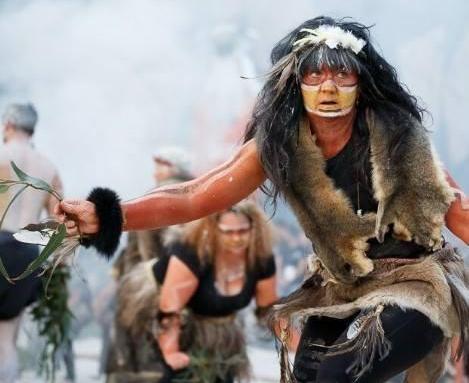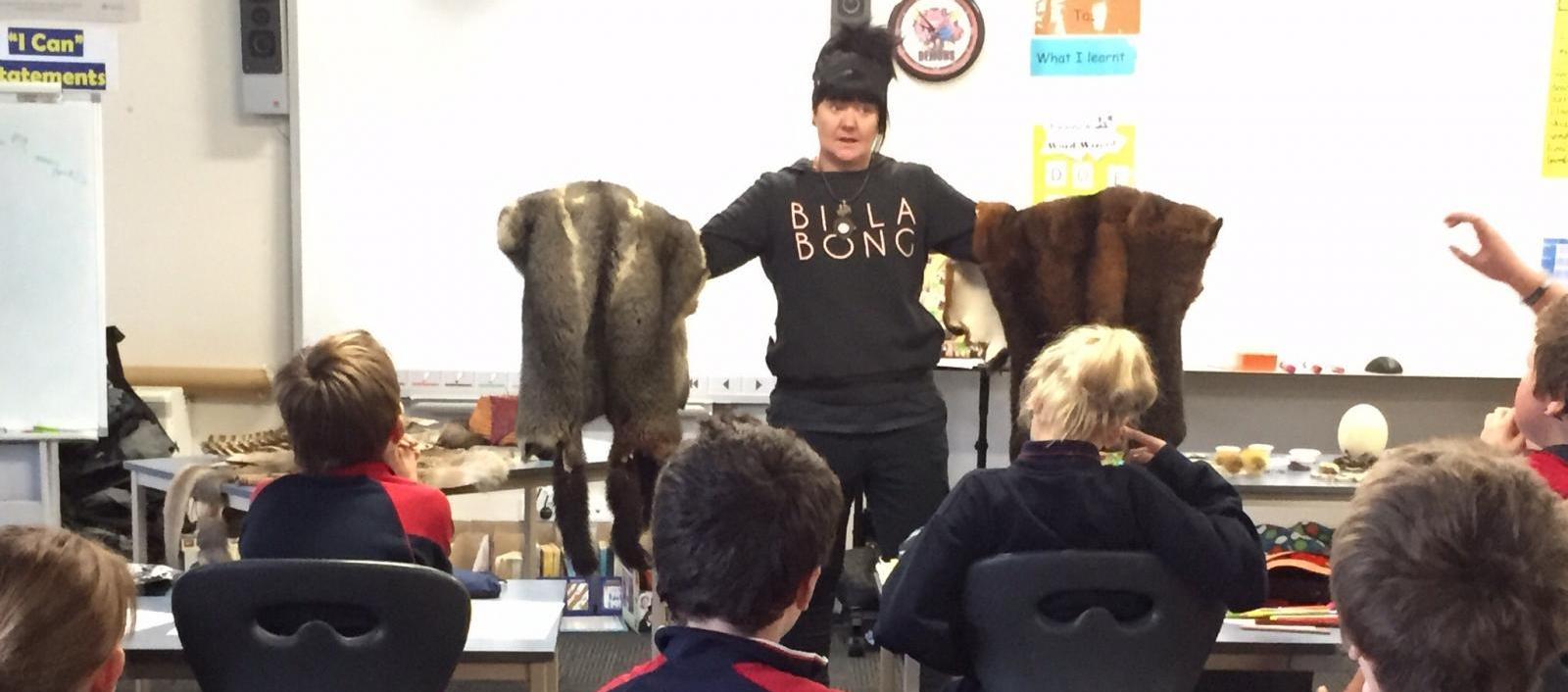Cassie Leatham is a Taungurung/Wurundjeri woman of the Kulin Nation. Cassie specialises in cultural education programs for both Indigenous and non-Indigenous people, working across different mediums teaching the traditional techniques and the ways of old.
In the interview below, Cassie talks about her cultural journey and the importance of being connected to culture.

1. What were some of the practical things that you did to connect with your culture?
At a young age I explored with different mediums in art and explored bushland. Doing this I connected to my culture and still to this day I’m always out on Country exploring and building on my knowledge.
I want to make a difference in communities and share my knowledge and teach the youth and bring Elders and youth together.
2. What were some of the challenges that you’ve encountered along your journey?
Some challenges I've encounted on my journey is some community members not accepting me as an Indigenous person, either due to my skin colour or jealousy due to my skills and knowledge. This has not however stopped me teaching culture or continuing nurturing culture. If anything it makes me stronger and more determined to break down these barriers and identity issues that many Indigenous people may have and educate others that not all Indigenous people are dark skinned, not all Indigenous people had the privilege to grow up on their own Country due to being stolen generations or other circumstances.
I’m determined to be a good role model for the youth.
3. What does self-determination mean to you?
I am self determined because I want to make a difference in communities and share my knowledge and teach the youth and bring Elders and youth together, bring back old ways in today's modern society and I’m determined to make a difference and educate non-Indigenous people to help them understand the ways of our Koorie peoples. I’m determined to be a good role model for the youth and adults also, to help with knowledge lost and bring it back to Elders who had it taken from them or lost on their own journey.


4. What are some of the challenges ahead that Aboriginal people need to face in the fight for self-determination?
Indigenous people face challenges such as identity, belonging, drugs, alcohol issues, unemployment, lack of education, some of these can cause walls going up for some and they feel trapped. They lack education and some have no positive role models to look up to. They feel that they have nothing and low confidence and self esteem plays a big part so they have no self determination. With good services and some positive people in communities I’m sure this can change. More projects and programs need to be put in place for helping with these issues and to build confidence and build social activity.
To learn culture you need to experience it otherwise its no truth into what your doing.
5. What advice can you pass on to a young person who is at the beginning of their cultural journey?
The advice I would give to a young person who is starting on their cultural journey would be, stay true to yourself, stand strong and proud, find your heritage connection and talk to your Elders or community about traditions, dance, stories, families. Don’t google anything, as to learn culture you need to experience it otherwise there's no truth into what your doing. Oral ways like the old people should be continued as this way you must listen and respect and learn with your hands. Stay focused and build on your knowledge - past, present and the future is awaiting.


6. How can a greater awareness about Aboriginal culture spread and be shared with non-Indigenous peoples?
More education needs to be put in place for non-Indigenous peoples to learn about the First People, not only in museums or galleries, but it starts in early childhood education, schools, university and at festivals and major events. To have Indigenous people present a cultural workshop, or talk or demonstration breaks down the barriers and makes understanding our culture more inviting.
My love for my work comes from the heart, I’m passionate and live culture everyday, theres not a day that I do not do something that involves my culture.
7. Talk about the work that you do – what is the purpose of your work? Do you see the effect it has on people? What do you love about the work that you do?
I specialise in cultural education for both Indigenous and non-Indigenous people, I facilitate workshops in all different mediums and using traditional skills I have taught myself. I teach in schools all over Australia and travel to other Indigenous communities to do cross culture exchange which has been very successful. I also mentor Koorie youth and teach numerous activities to these students. I present educational native plant talks and I am an accomplished professional artist with works in galleries and the NGV (National Gallery of Victoria) and the Koorie Heritage Trust collection. I've also featured on Gardening Australia and as a co-host on radio.
My love for my work comes from the heart, I’m passionate and live culture everyday, there's not a day that I do not do something that involves my culture. The effect my work has on people is inspiring and uplifting, and I hope that many more can follow in my footprints as I’m following in my ancestors' and keeping my culture alive. The most rewarding part of my job is to see and hear the youth aspiring to be like me and that are willing to learn the ways and attempt to build their knowledge. And that I help those who are fair skinned like me to be proud of there heritage and not be shame what colour your skin is and to keep in mind to stand proud and accept the connection they have to country, to nurture it and respect it.
* The gallery below showcases the work that Cassie does in connecting to culture. These have been reproduced and shared with permission from Cassie.
